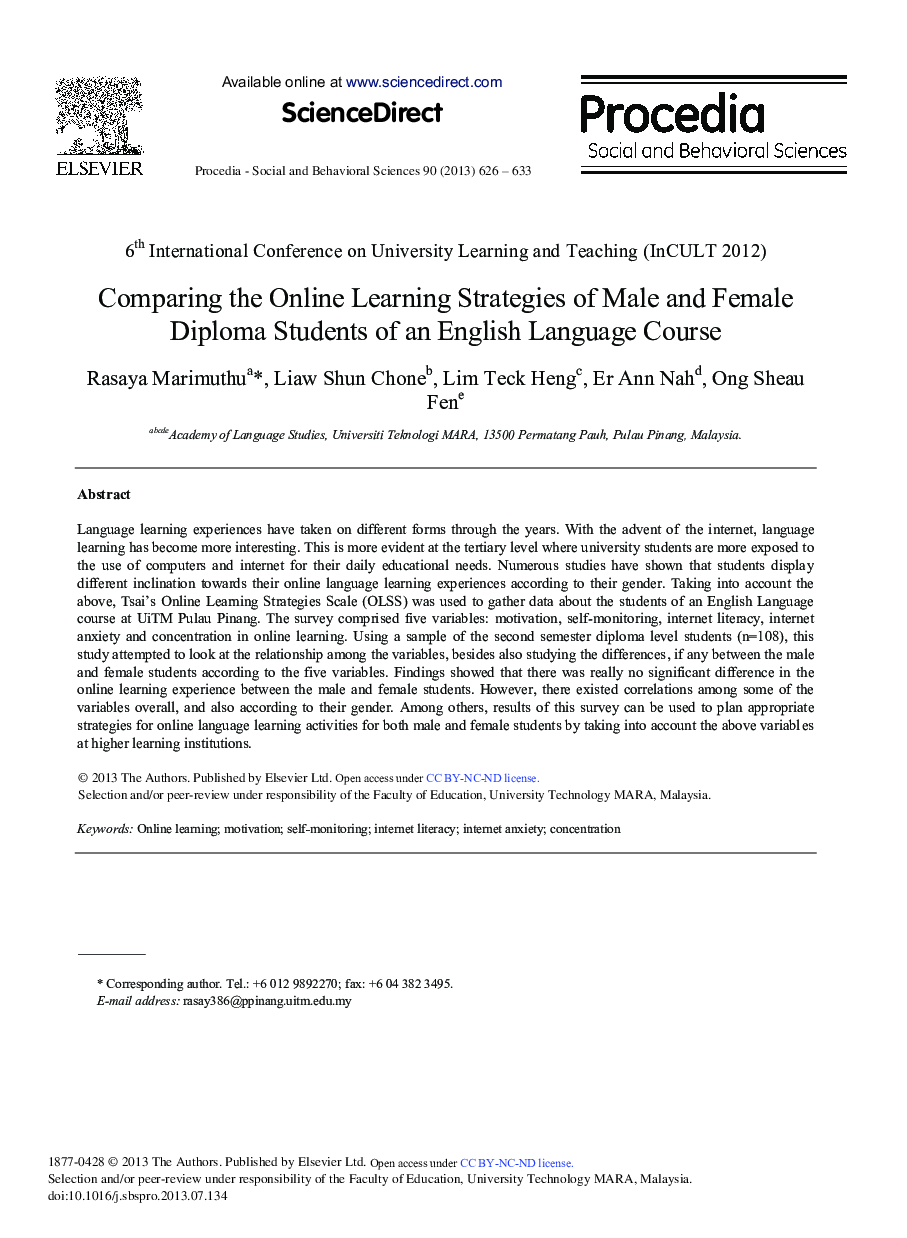| کد مقاله | کد نشریه | سال انتشار | مقاله انگلیسی | نسخه تمام متن |
|---|---|---|---|---|
| 1116433 | 1488469 | 2013 | 8 صفحه PDF | دانلود رایگان |

Language learning experiences have taken on different forms through the years. With the advent of the internet, language learning has become more interesting. This is more evident at the tertiary level where university students are more exposed to the use of computers and internet for their daily educational needs. Numerous studies have shown that students display different inclination towards their online language learning experiences according to their gender. Taking into account the above, Tsai's Online Learning Strategies Scale (OLSS) was used to gather data about the students of an English Language course at UiTM Pulau Pinang. The survey comprised five variables: motivation, self-monitoring, internet literacy, internet anxiety and concentration in online learning. Using a sample of the second semester diploma level students (n=108), this study attempted to look at the relationship among the variables, besides also studying the differences, if any between the male and female students according to the five variables. Findings showed that there was really no significant difference in the online learning experience between the male and female students. However, there existed correlations among some of the variables overall, and also according to their gender. Among others, results of this survey can be used to plan appropriate strategies for online language learning activities for both male and female students by taking into account the above variables at higher learning institutions.
Journal: Procedia - Social and Behavioral Sciences - Volume 90, 10 October 2013, Pages 626-633